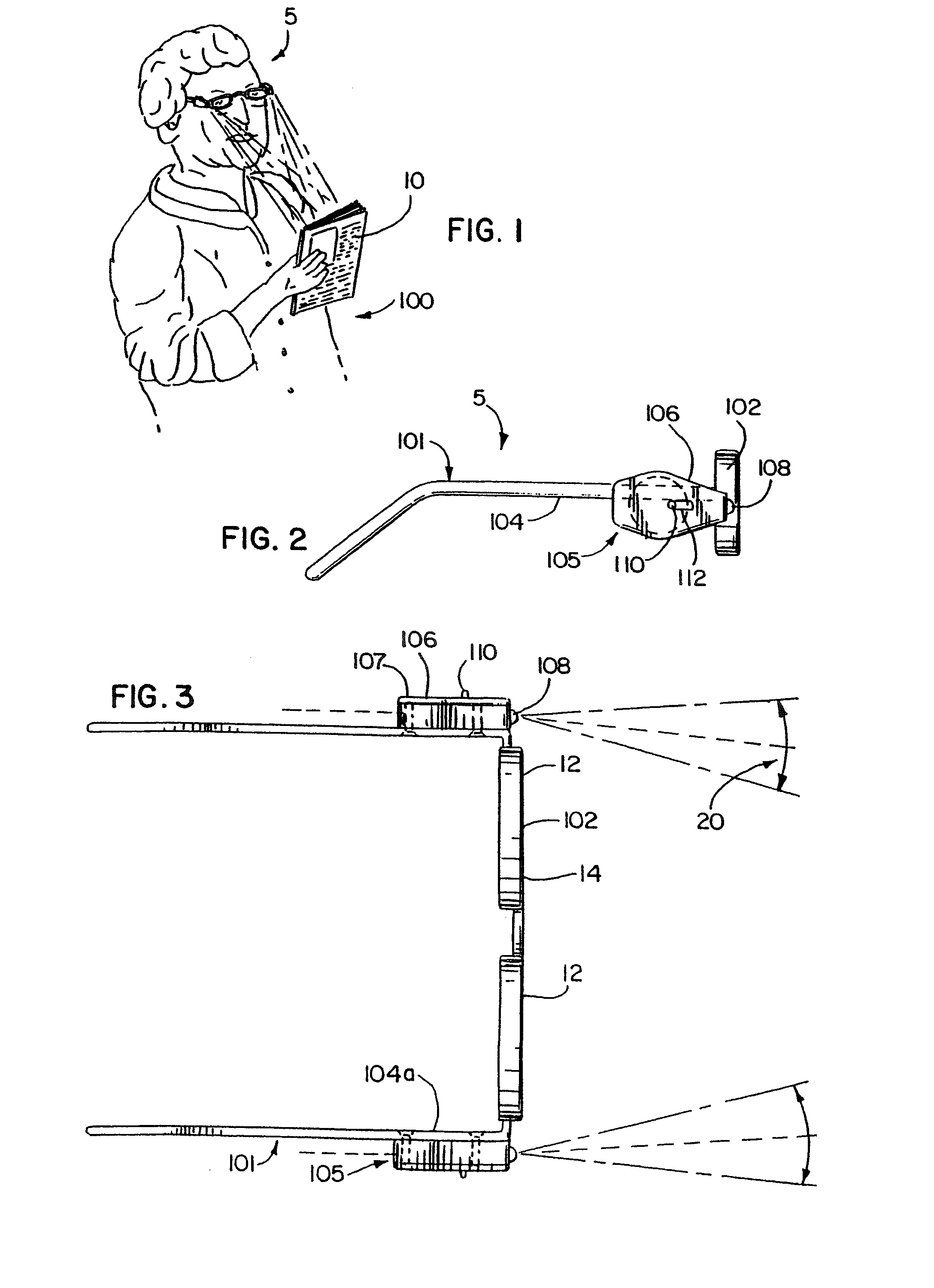Clip-on light apparatus
a technology of light apparatus and clip, which is applied in the direction of lighting support devices, lighting and heating apparatus, instruments, etc., can solve the problems of not being very well adapted to use with reading glasses, lighting devices generating a significant amount of heat, and being subject to being frequently taken off and put back, etc., to achieve greater freedom of light positioning, increased holding force, and more versatile
- Summary
- Abstract
- Description
- Claims
- Application Information
AI Technical Summary
Benefits of technology
Problems solved by technology
Method used
Image
Examples
Embodiment Construction
[0056]As shown in drawings for purposes of illustration, the invention is embodied in lighted reading glasses 5 which enable a user wearing the glasses 5 as shown in FIG. 1 to clearly read conventionally sized printed text 10, e.g. ten or twelve point font, held in a range of distances suitable for reading such text sizes where the reading is occurring in poorly or dimly lit areas. In this regard, the present lighted reading glasses 5 are ideally suited for use in areas that normally require a user to turn on a light before reading can occur but where doing so is less than desirable, such as in a car or when reading in bed with another present who is trying to sleep while you read.
[0057]The lighted glasses 5 which as stated above are preferably reading glasses 5 will include lenses 12 of light transmissive material configured to refract light to correct for defects in vision due to errors of refraction in the human eye and thus, at least one of the lens surfaces 14 will be curved to...
PUM
 Login to View More
Login to View More Abstract
Description
Claims
Application Information
 Login to View More
Login to View More - R&D
- Intellectual Property
- Life Sciences
- Materials
- Tech Scout
- Unparalleled Data Quality
- Higher Quality Content
- 60% Fewer Hallucinations
Browse by: Latest US Patents, China's latest patents, Technical Efficacy Thesaurus, Application Domain, Technology Topic, Popular Technical Reports.
© 2025 PatSnap. All rights reserved.Legal|Privacy policy|Modern Slavery Act Transparency Statement|Sitemap|About US| Contact US: help@patsnap.com



